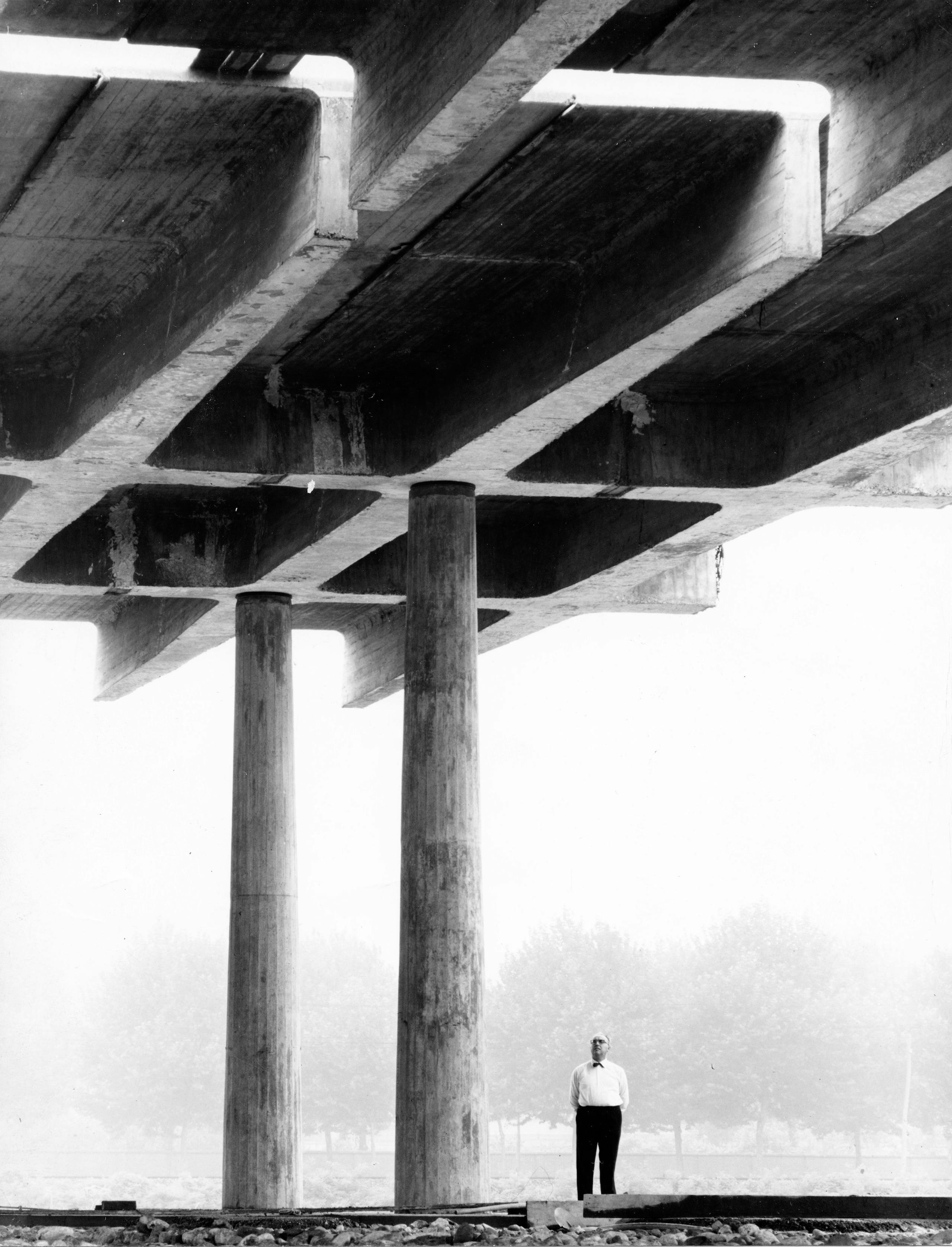
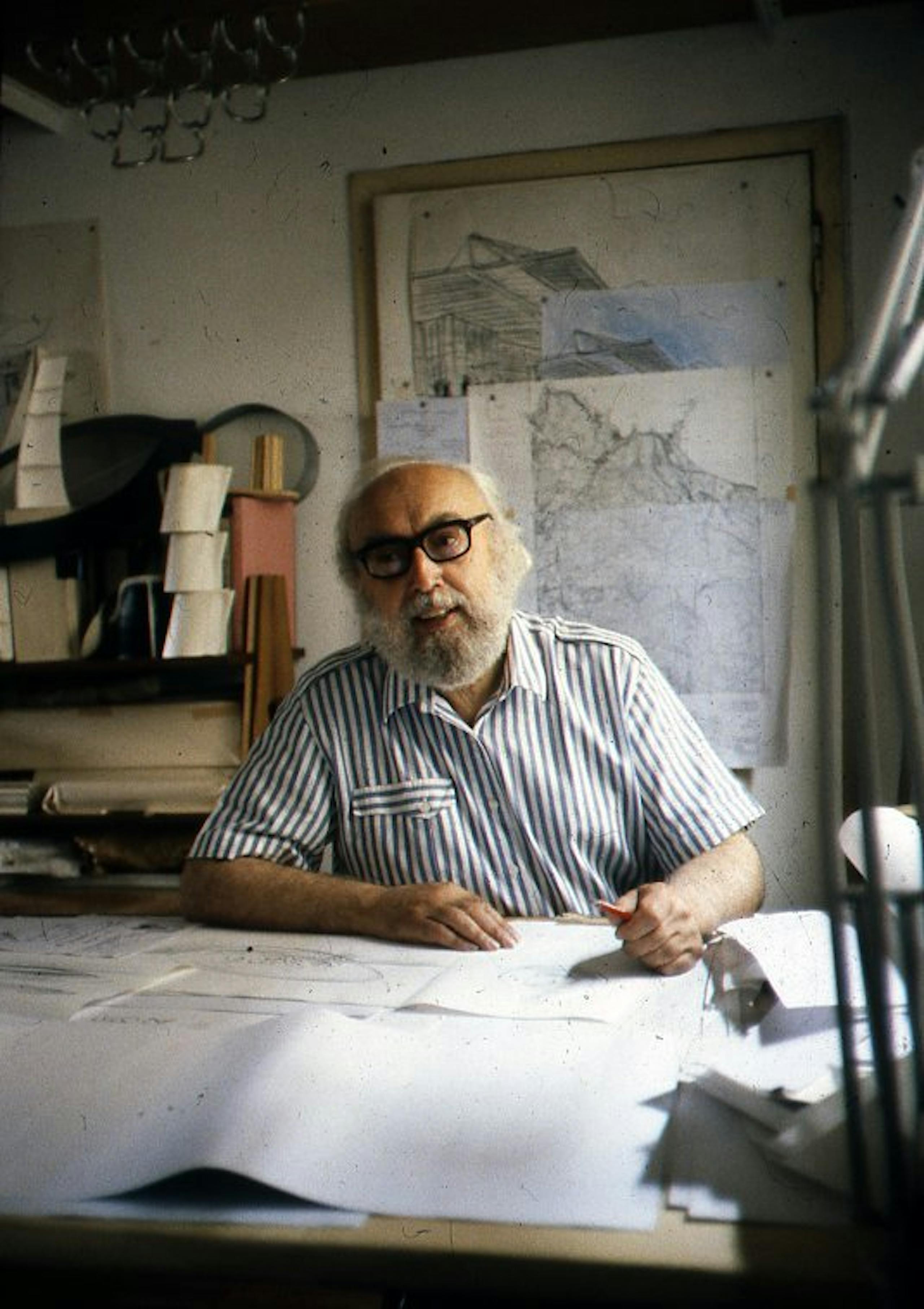
Courtesy Archivio Angelo Mangiarotti
Varied and eclectic, the design activity of the great Milanese architect was distinguished by two constants: an unmistakable sign and the reappearance of certain formal obsessions, which went hand in hand with an uncommon knowledge of materials and of their properties.
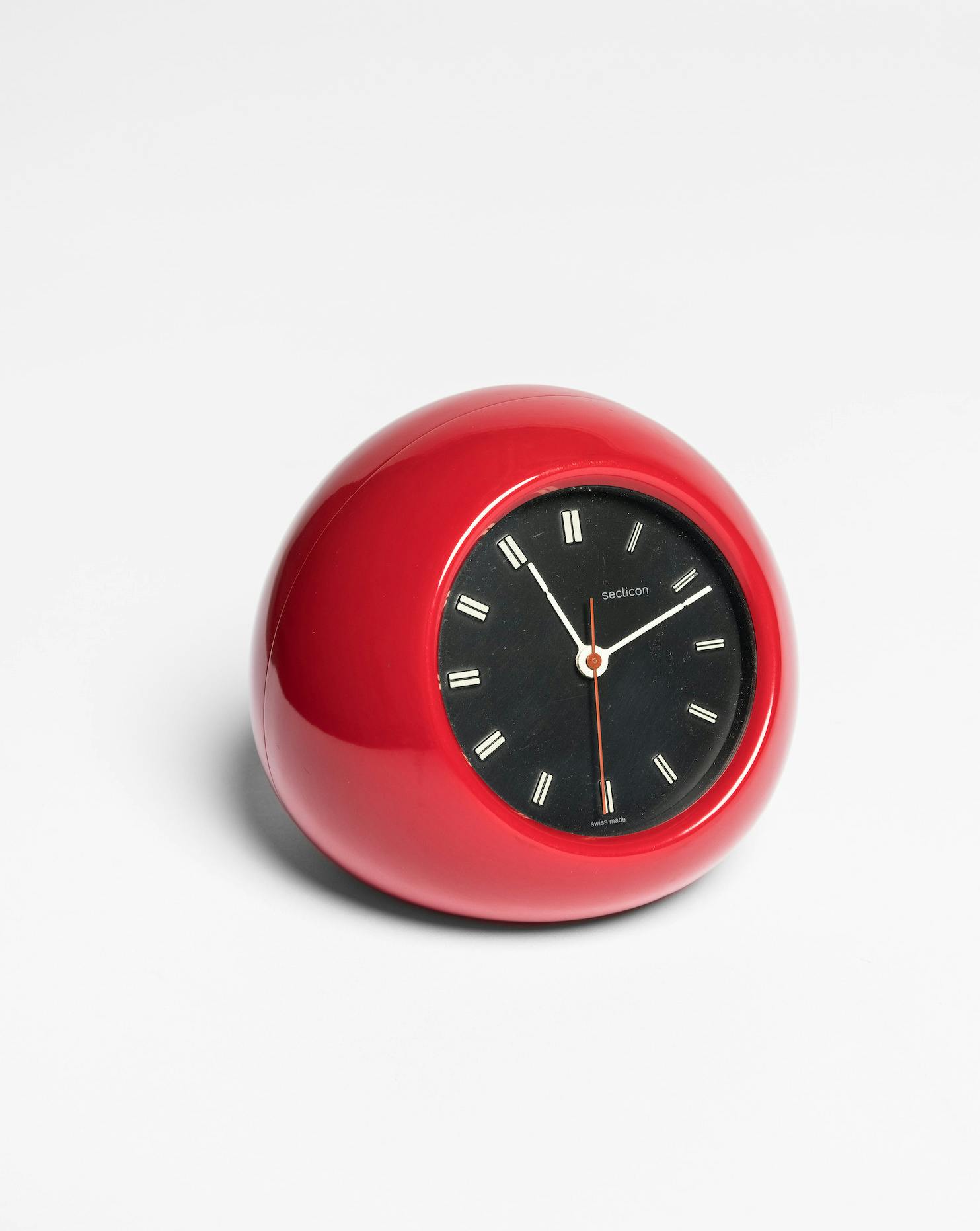
Angelo Mangiarotti, Bruno Morassutti, Mod. T2, Secticon series, 1956, Le porte Echappement Universel S.A., © Triennale Milano - Permanent Collection, photo Gianluca Di Ioia
The furniture and objects designed by Angelo Mangiarotti in the course of a career lasting over sixty years that garnered him prestigious awards like the Compasso d’Oro career award (received in 1994) are among the most recognizable pieces in the history of design. As many people have noted, his projects feature a series of archetypal elementary forms applied on different scales and with different functions. For example, the mushroom not only inspired his celebrated 50-meter-high water tower designed in 1961 in the Roman countryside but also the plastic case containing the movements of the clocks that he designed, together with Bruno Morassutti, for Secticon clocks between 1955 and 1965 – one of his first international successes – the Saffo and Lesbo blown glass lights created for Artemide in 1966, and an entire series of vases and containers. Truncated cone pillars, used in various architectural projects, reappear as the marble legs of the tables in the Eros series Eros (produced by Fratelli Brambilla in the early 1970s and recently reissued by Agape), supporting and holding the top in place thanks to an ingenious locking system based on a gravity joint.
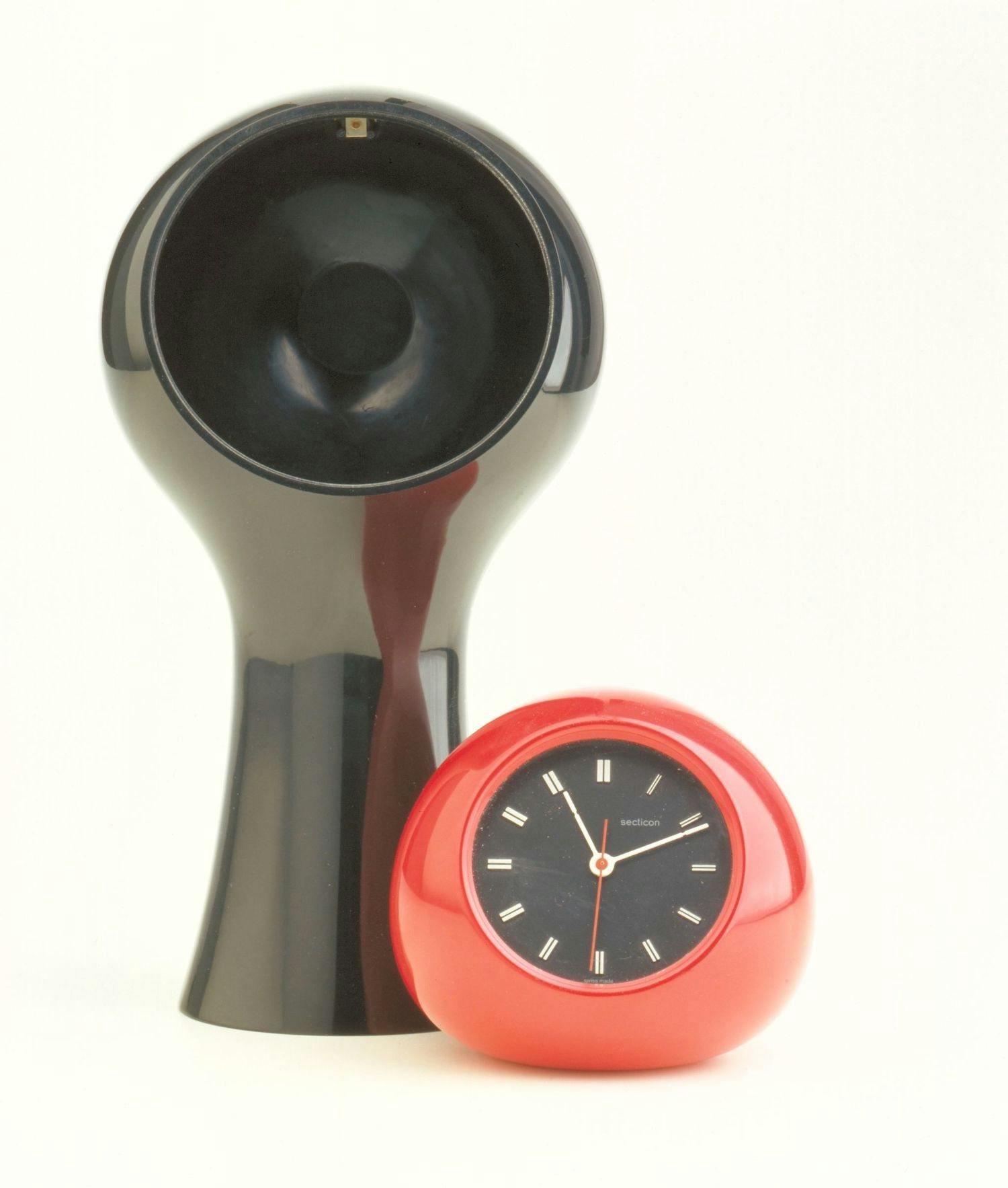
Angelo Mangiarotti, Bruno Morassutti, Mod. T2, Secticon series, 1956, Le porte Echappement Universel S.A., © Triennale Milano - Permanent Collection, photo Gianluca Di Ioia
Far from a search for authoriality or an attempt to impose his own brand at any cost, these forms – which are apparently simple yet actually highly sophisticated and unmistakable – result from a linear thought process and are often the only possible solution to a given problem. Speaking about his fascination with the work of the Italian maestro in an interview with Davide Maffei for the documentary Alfabeto Mangiarotti (2022), the German designer Konstantin Grcic explains, “When you see it [the form], you understand its logic.” He goes on to say, “I think it’s natural. That it has to be like that and this is what quality is. When you can remove or conceal the author.”
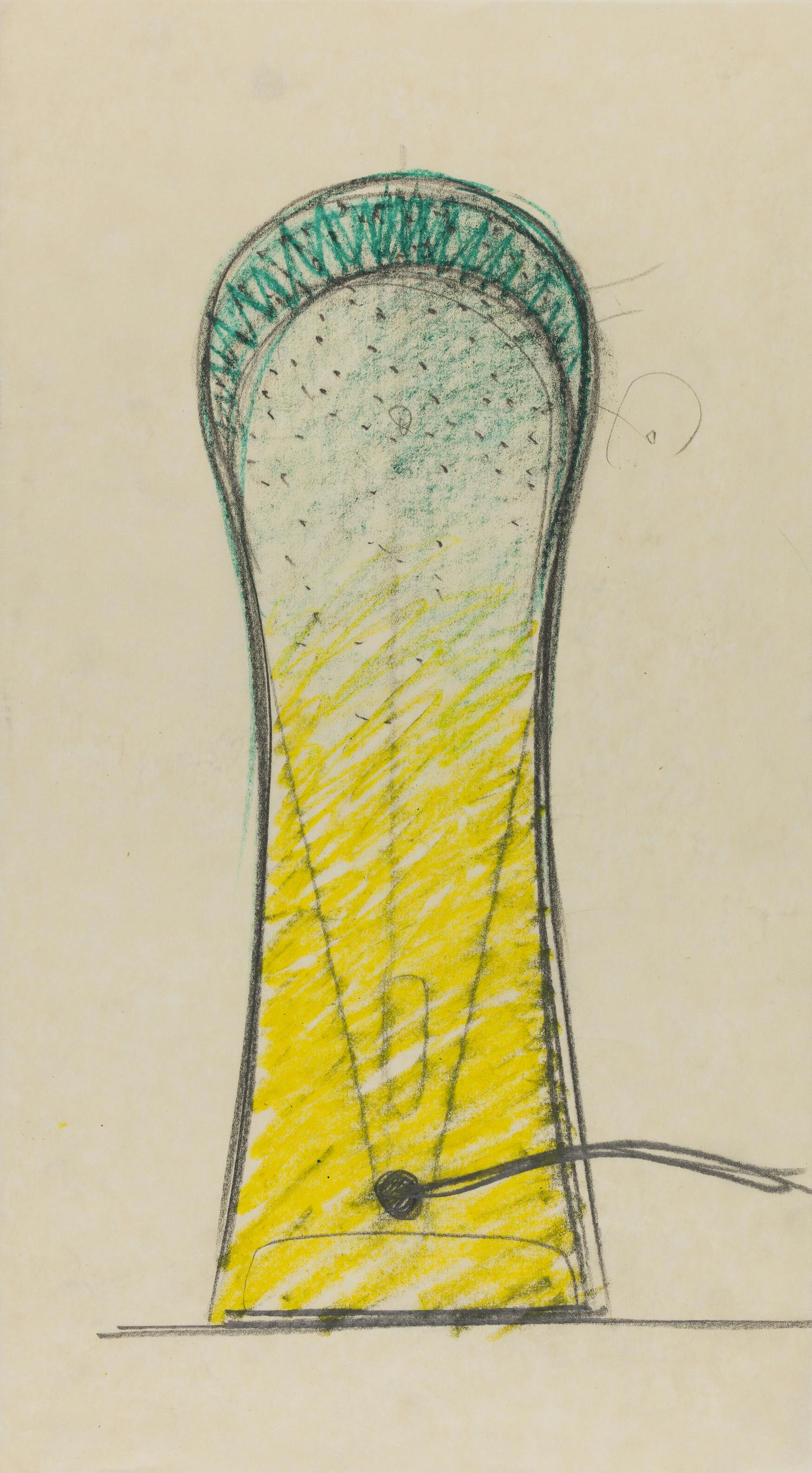
Angelo Mangiarotti, Sketch for the Saffo lamp, 1966, Courtesy Archivio Fondazione Angelo Mangiarotti, © Triennale Milano, photo Gianluca Di Ioia
Mangiarotti’s originality and the fineness of his lines are never an end in themselves but are placed at the service of the needs of the future user of the object and, above all, of the materials. Underpinning his practice is a profound knowledge of the physical composition and tactile characteristics of materials, which are often used as they are, without ever concealing or disguising them, accompanied by the gestures necessary to work them, either using traditional techniques or with the help of new technologies, thanks also to the time he spent working in close contact with artisans. His dialogue with Murano’s master glass blowers led him to develop a hook-shaped element made from a ribbon of glass cut and stretched by hand that could hold up to fifty times its own weight. By joining together a series of these hooks, he created the V+V hanging light for Vistosi in 1967, an iconic piece still in production today.
Over the years, Mangiarotti did not hesitate to turn to archaic techniques like the lost wax process in order to cast bronze or to use materials not often employed in design or that had fallen into disuse (like marble, which lost much of its appeal after the war due to its association with the Ventennio Fascista, or alabaster). He used them in serial production, sometimes contributing to the relaunch of entire artisan sectors. Often it was the material itself that established the direction to be taken by a project and design criteria could be translated into different forms depending on the material being used. In 1978, the aforementioned Eros system with the gravity joint that was one of Mangiarotti’s great inventions was produced using different stone materials, like pietra serena, which was cut rather than being lathe-turned like the marble blocks. The use of these different processes led to differing outcomes. In fact, the Inca range (with gravity joints) has cleaner lines, with square tops and truncated pyramid legs with a trapezoidal section. The many many free-form vases, forming a veritable constellation, have different outlines and thicknesses depending on the materials from which they are made and on the casting techniques used.
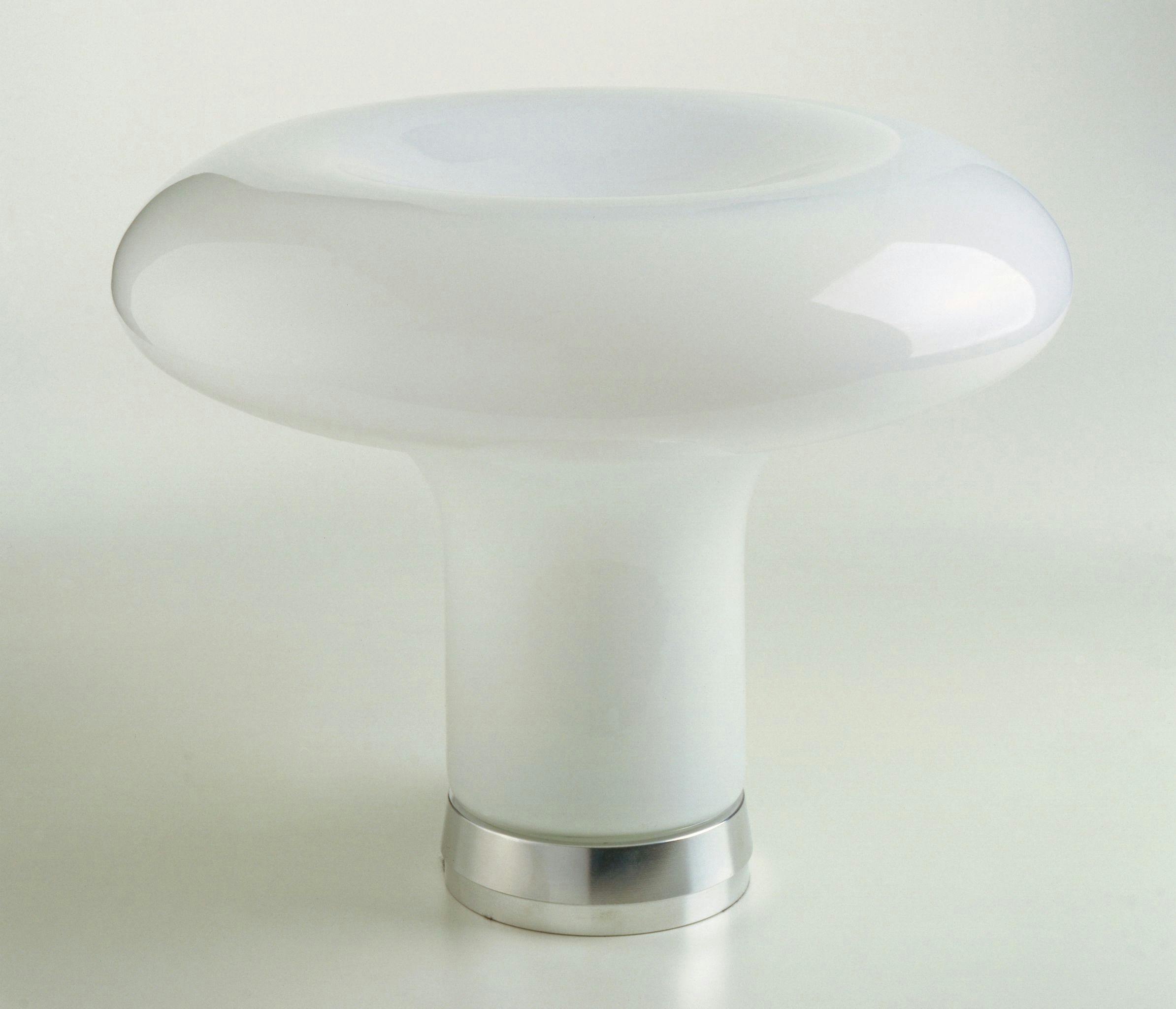
Angelo Mangiarotti, Lesbo, 1967, Artemide, © Triennale Milano - Permanent Collection, photo Amendolagine Barracchia
Thanks to his in-depth research into materials, the Milanese architect and designer played around with the relationship between stability and instability, sometimes pushing himself to the extreme limit. He was also a trailblazer, often focusing upon aspects that would only come to the fore much later, like the reduction of waste. The Eccentrico table (1979), entirely made of marble, featured a sloping cylindrical base slotted into an elliptical top, maintaining its balance despite its asymmetry and the off-centre leg due to a carefully calculated distribution of forces. The sinuous lines of Clizia, an upside-down L-shaped garden bench designed in 1990, were carefully designed so as to allow two pieces to be cut from the same block of stone in a single operation carried out using CNC cutting machines.
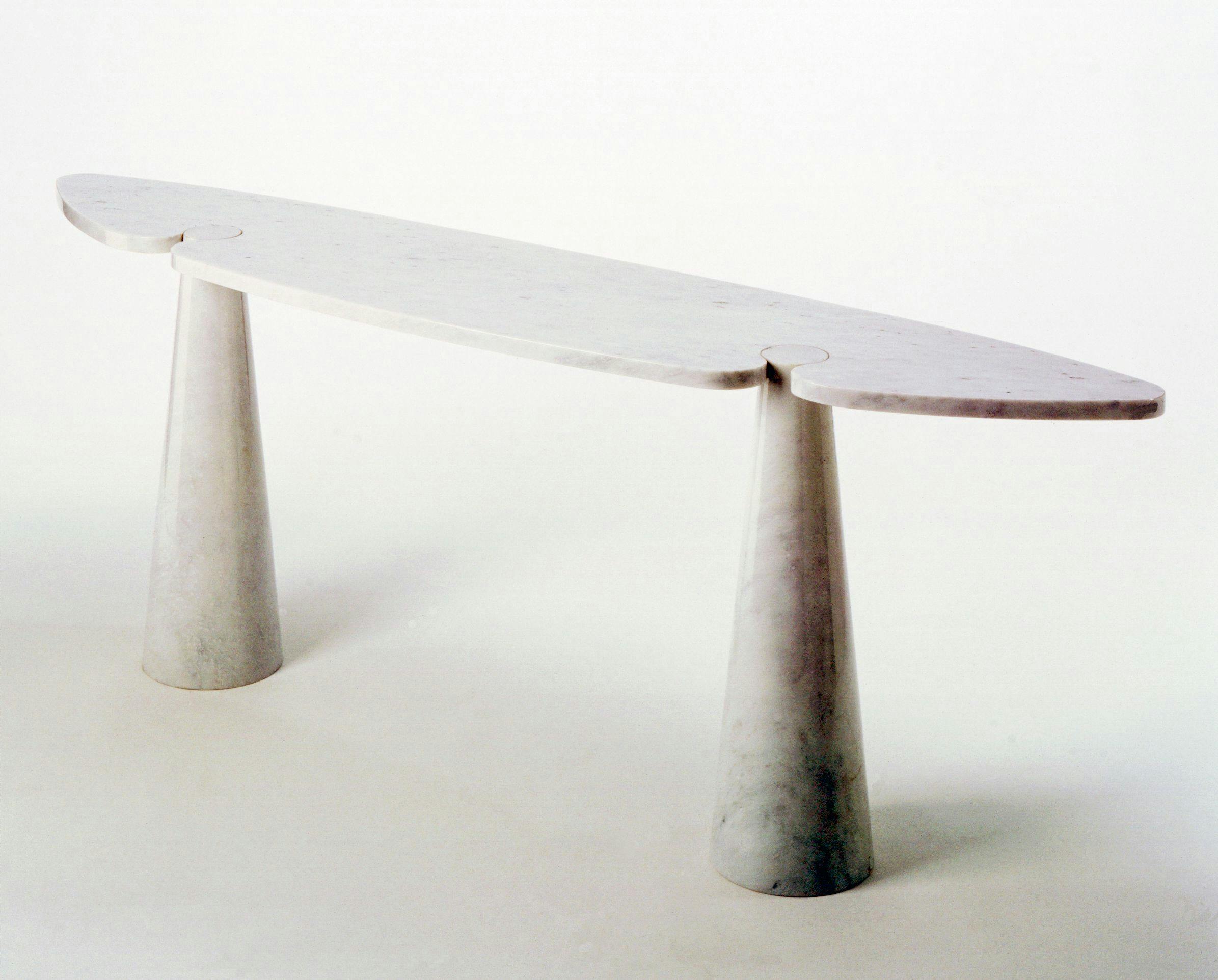
Angelo Mangiarotti, Eros, 1971, Fratelli Brambilla, © Triennale Milano - Permanent Collection, photo Amendolagine Barracchia
Related events
